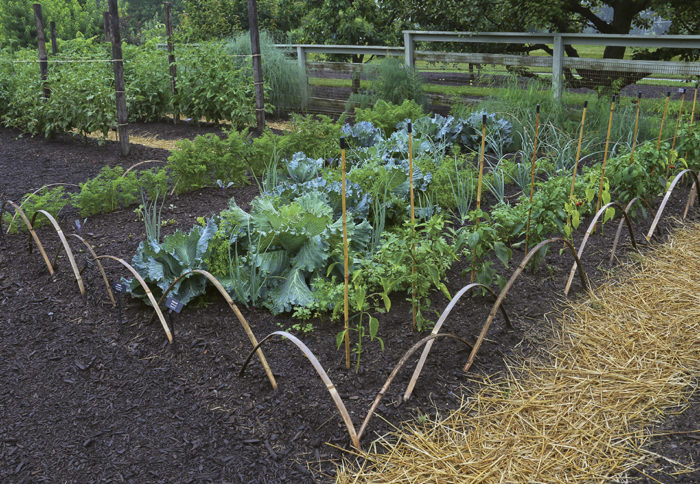
Whether you grow just a few tomatoes or a yard full of vegetables, edibles can be a beautiful part of your landscape. For design inspiration, I visited two great vegetable gardens at Chanticleer and Longwood Gardens in Pennsylvania. The horticulturists at these inspirational public gardens use many of the same design principles seen in ornamental landscapes. They work with color, texture, form, and focal points to add visual impact to their productive plots. Take a page from their book, and incorporate some of these design ideas into your garden.
LESSON
Think About Color, Texture, and Form
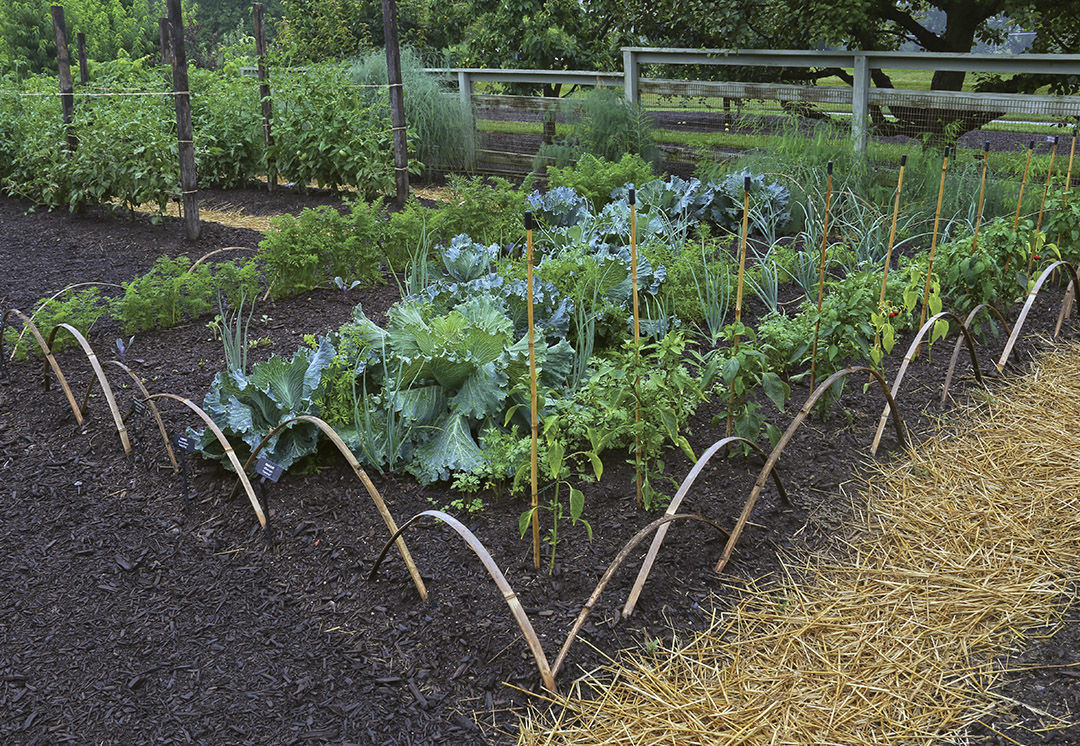 The same principles that guide a successful ornamental design can also be used to beautify a veggie patch. Here, the unique bamboo edging adds structure, defines the space, and serves as an artistic focal point. Within the garden bed, boldly ruffled cabbage leaves provide textural contrast for feathery carrot tops, slender onion greens, and upright pepper plants. The glaucous brassica foliage also gives the design a delicious dose of cool blue.
The same principles that guide a successful ornamental design can also be used to beautify a veggie patch. Here, the unique bamboo edging adds structure, defines the space, and serves as an artistic focal point. Within the garden bed, boldly ruffled cabbage leaves provide textural contrast for feathery carrot tops, slender onion greens, and upright pepper plants. The glaucous brassica foliage also gives the design a delicious dose of cool blue.
LESSON
Make a Grand Entrance
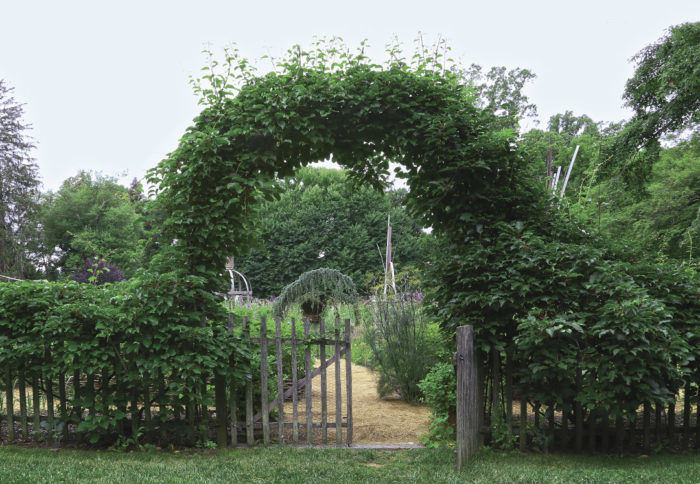 A vegetable garden doesn’t need to feel disconnected from the rest of the landscape. A beautiful entryway welcomes visitors and lets them know that edibles are an important part of your garden. At Chanticleer, hardy kiwi (Actinidia arguta, USDA Hardiness Zones 4–8) arches over the gate, making a dramatic first impression.
A vegetable garden doesn’t need to feel disconnected from the rest of the landscape. A beautiful entryway welcomes visitors and lets them know that edibles are an important part of your garden. At Chanticleer, hardy kiwi (Actinidia arguta, USDA Hardiness Zones 4–8) arches over the gate, making a dramatic first impression.
LESSON
Weaving Wattles
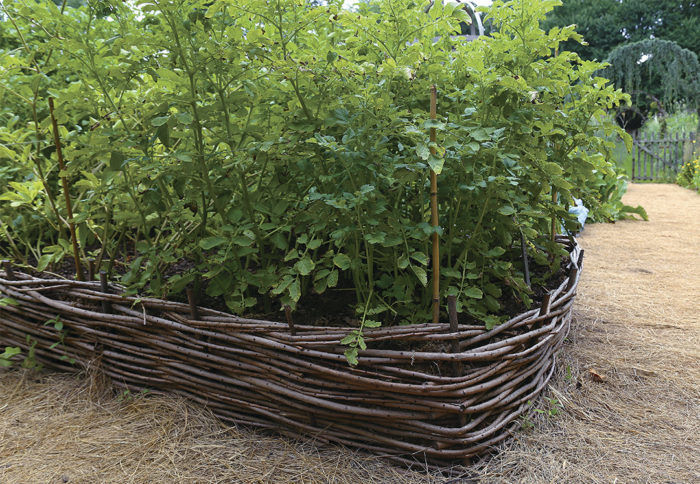 The “baskets” around Chanticleer’s raised potato beds look fresh and contemporary, but the practice of weaving walls and other structures from branches dates back hundreds of years. Horticulturist David Mattern used branches pruned elsewhere on the property, weaving long, flexible branches between stout upright stakes. Here’s how to re-create this look in your own garden.
The “baskets” around Chanticleer’s raised potato beds look fresh and contemporary, but the practice of weaving walls and other structures from branches dates back hundreds of years. Horticulturist David Mattern used branches pruned elsewhere on the property, weaving long, flexible branches between stout upright stakes. Here’s how to re-create this look in your own garden.
1. Set aside long, slender “whips” when pruning or pollarding in spring. These should be flexible, unbranched, at least 4 or 5 feet long, and about as thick as a pencil or a finger. For the upright stakes, you’ll need thicker, sturdier branches that are about 3 feet long.
2. Sharpen the ends of your uprights with a sharp hatchet, always cutting away from yourself. Drive the stakes into the ground at even intervals, 18 to 24 inches apart. About half the height of your stakes (18 inches) should be underground, and they should be straight and vertical. In hard soil, start holes by driving a piece of rebar into the soil first and pulling it out.
3. Weave the thin branches between the upright stakes. When you start a new branch, let it overlap the previous branch by at least a couple of feet.
4. Push the woven branches down with your foot as you go, to help keep the woven branches close together. When your wattle structure is the desired height, trim off any loose ends, and fill gaps in the weave by tucking in thin branches. Your structure should last at least a couple of seasons, and perhaps longer, depending on the species of wood used.
Recommended Plants
• Willow (Salix spp. and cvs.)
• Smoke bush (Cotinus coggygria cvs.)
• Colored-stem dogwoods (such as Cornus alba and C. sericea, cvs.)
DESIGN
Elements of a Knockout Veggie Patch
The tension between contrast and repetition makes a garden design interesting. Here are a few takeaway ideas that can be incorporated into any garden, regardless of size or budget.
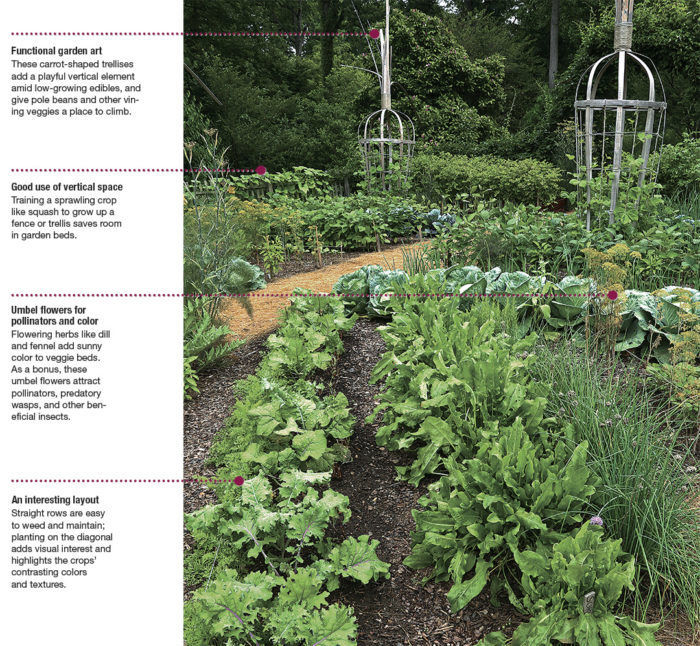
Carol Collins is the assistant editor.
Photos: Carol Collins, taken at Longwood Gardens and Chanticleer




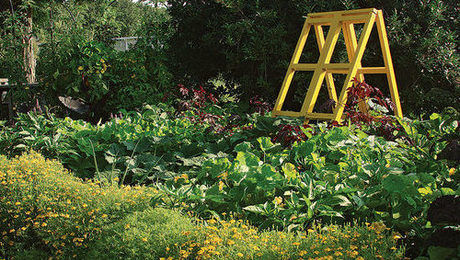













Comments
Log in or create an account to post a comment.
Sign up Log in